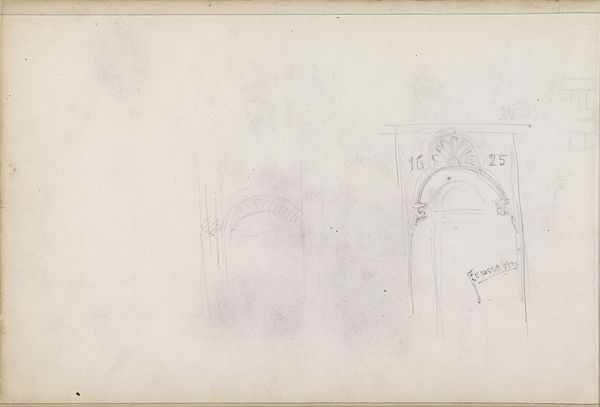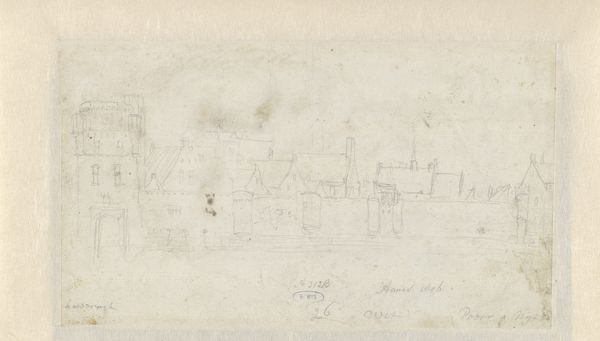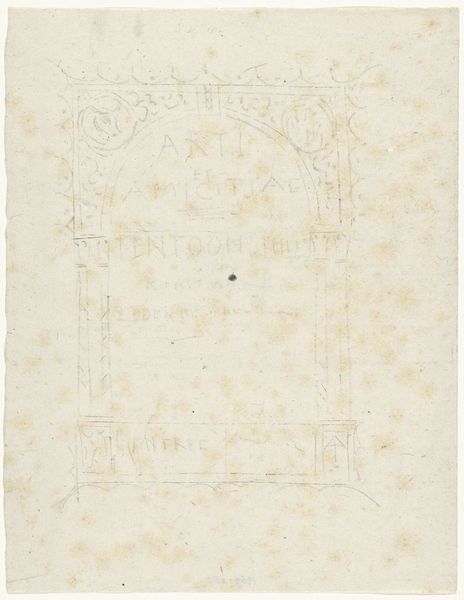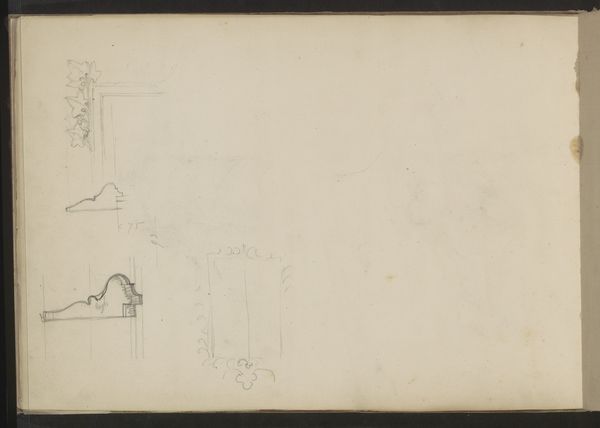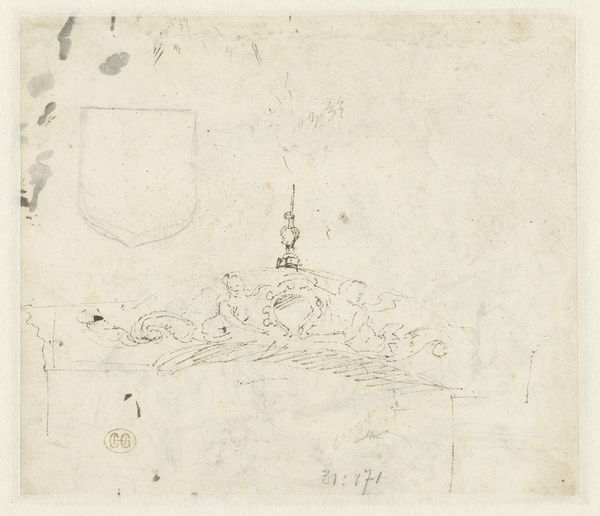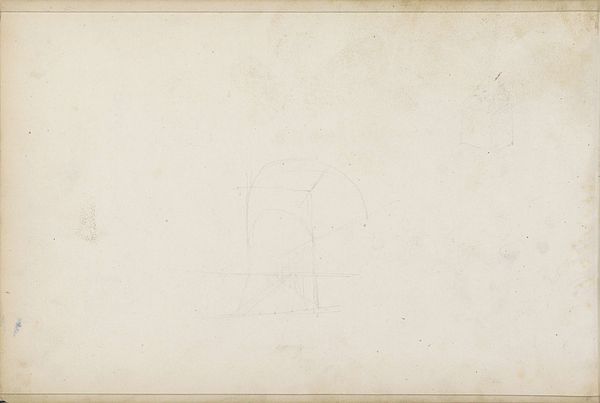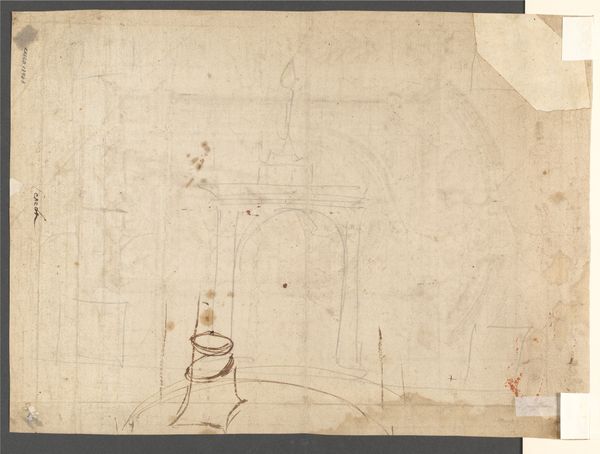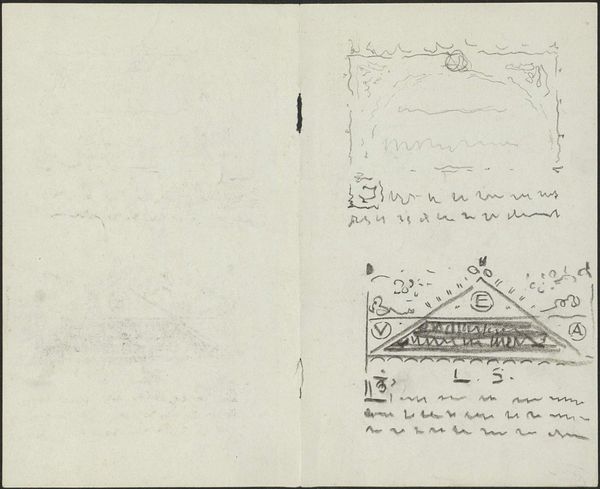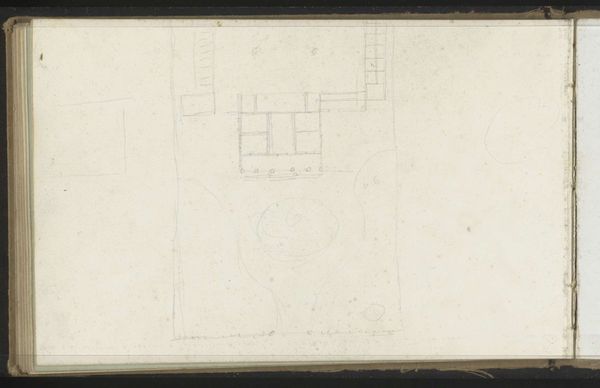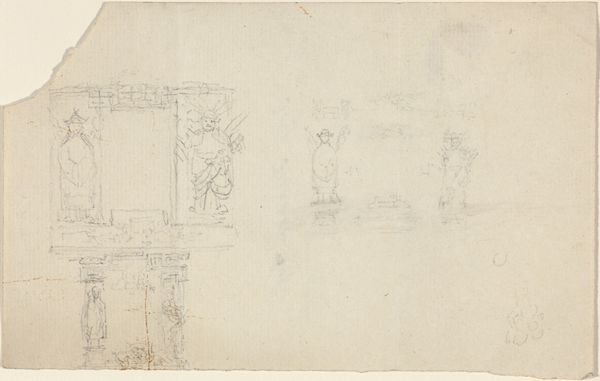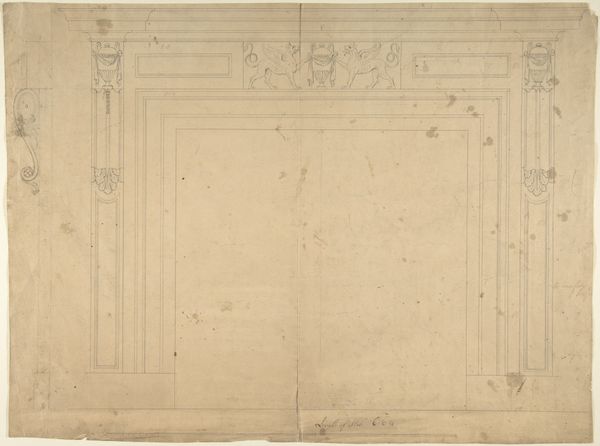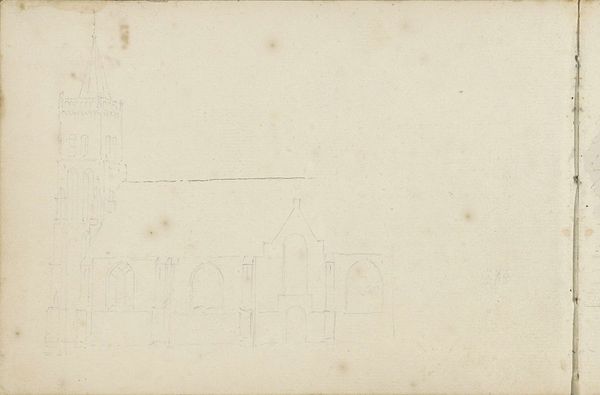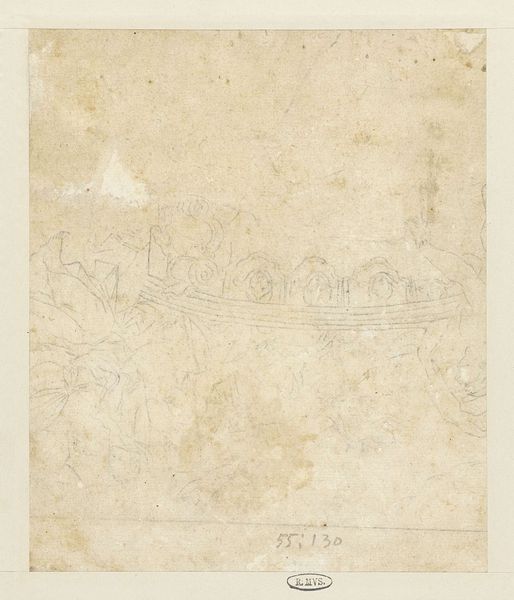
Details van de architectuur van de Ibn Toeloenmoskee te Caïro c. 1850
0:00
0:00
pierrejosephhubertcuypers
Rijksmuseum
drawing, pencil, architecture
#
drawing
#
form
#
geometric
#
pencil
#
line
#
islamic-art
#
architecture
Copyright: Rijks Museum: Open Domain
Editor: Here we have "Details van de architectuur van de Ibn Toeloenmoskee te Caïro," or "Details of the Architecture of the Ibn Tulun Mosque in Cairo," created around 1850 by Pierre Joseph Hubert Cuypers. It’s a pencil drawing, seemingly of architectural elements. What do you make of it? Curator: It’s fascinating to consider this drawing as a document of labor, not just an aesthetic exercise. Look at the repetitive, almost mechanical way these architectural details are rendered. It speaks to a process, a means of recording and potentially reproducing these forms. Think about the social context: Cuypers, a Western architect, studying Islamic architecture. What were the power dynamics at play? Editor: Power dynamics? How so? Curator: The act of drawing, of recording, can be an act of appropriation. Cuypers is extracting these details from their original context. He's isolating these elements of Islamic architecture, potentially for use in his own designs. It makes me wonder about his motivations. What material benefit might he derive from these studies? Editor: That’s an interesting point. I was just thinking about the geometry, the lines…but you're right, there’s a whole other layer related to cultural exchange and influence. The materiality, just the pencil on paper, feels loaded with meaning now. Curator: Exactly. The medium is never neutral. Even seemingly objective line drawings are infused with the social relations of production and exchange. Do you notice any hierarchy within this visual record? Is more care given to certain elements, or is it merely the function of geometric rendering? Editor: I see, the differing levels of detail might speak to what Cuypers valued, or what he found most useful for his own architectural practice back home. Thanks! I hadn't considered all of this! Curator: Precisely! Hopefully, this brief exploration underscores the necessity of delving into how these works were made, the environment of their making, and what their function truly represented in their own time.
Comments
No comments
Be the first to comment and join the conversation on the ultimate creative platform.
